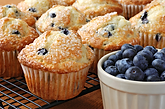
I'm a description. Click to edit me

student reading

I'm a description. Click to edit me

I'm a description. Click to edit me
Making Marvelous Muffins with "M"
Rationale: This lesson will help children identify /m/, the phoneme represented by M. Students will learn to recognize /m/ in spoken words by learning meaningful representation (making muffins) and the letter symbol M, practice finding /m/ in words, and apply phoneme awareness with /m/ in phonetic cue reading by distinguishing rhyming words from beginning letters.
Materials: Primary paper and pencil; chart with “many mumbling mice are making midnight music in the moonlight”; drawing paper and crayons; Dr. Seuss’s ABC (Random House, 1963); word cards with MAT, MAN, MOP, MAKE, MICE, MOON; assessment worksheet identifying pictures with /m/.
Procedures
1. Say: Our written language is a secret code. The tricky part is learning what letters stand for—our mouths move as we say words. Today we are going to work on spotting the mouth move /m/. We spell /m/ with the letter M. M looks like a big mountain with two peaks, and /m/ M makes the noise “mmm” just like the noise you may make when you eat something delicious, like warm muffins straight from the oven!
2. Say: Let’s pretend to eat some super delicious muffins made by Miss. Meredith and make the sound /m/. Once you have an image of freshly baked muffins in your head, I want you to rub your stomachs and say “mmmm”. What happens to your lips when you say “mmm”? Your lips are pressed together! When we say /m/ our mouth stays closed. Here we go, /m/, /m/, /m/. [Pantomime eating yummy muffins].
3. Say: Let me show you how to find /m/ in different words. Let’s try the word make. I’m going to stretch mouse out in super slow motion and I want you to listen for the sound “mmm”. Mmmm-a-k-e. Did you hear the /m/? There it was! I felt the “m” when saying make while my lips were pressed together. We can even put it in a sentence, “I like to make yummy muffins.”
4. Say: Let’s try another word, this time the word is not going to start with /m/ and let’s see if you can find it! Let’s see if you guys can find /m/ in the word smart. I know you can all do this one because you are super smart students. Okay, I am going to say this one just like I did the last. S –mmmm-a-r-t. Did you notice where I had to close my mouth to say /m/ and did you hear that yummy /m/ sound?
5. Say: Now, let’s say a tongue tickler! (pull out chart with tongue tickler) “Miss. Meredith Merrily Makes Muffins on Monday’s.” Now let’s say it three times together. This time let’s stretch out the /m/ at the beginning of the words. “Mmmmiss. Mmmeredith mmmerrily mmmmakes mmmmuffins on Mmmmondays.” Now let’s try it again and this time we are going to break /m/ off the word. “/M/iss /M/eredith /m/errily /m/akes /m/uffin’s on /M/ondays.”
6. *Have students take out primary paper and pencil* Say: We use the letter M to spell /m/. I will demonstrate how to write the lowercase and uppercase letter M. To make the uppercase M we start at the sidewalk, go way up to the rooftop, bounce down to the fence, go back up to the rooftop, and end by coming all the way back down to the sidewalk. To make the lowercase m, we start at the sidewalk and then make two humps, or mountain tops, that bounce up to touch the fence. I want you to make 12 uppercase M’s and then 12 lowercase m’s.
7. Use the word cards for students to identify the words with M. Ex: pull out the card that says “MOP” and ask if they hear the /m/ sound in that word. Next, pull out the card that says “TOP” and ask if they hear the /m/ sound in that word. I will say “If you hear the /m/ sound in a word I say, I want you to say /mmm/ and rub your stomach as if you are eating yummy blueberry muffins. If you do not hear the /m/ sound, I want you to say “next!” for the next word.”
8. Say: Now, we are going to look at an alphabet book! Dr. Seuss tells a silly story about “many mumbling mice making music in the moonlight.” Can you imagine seeing little mice playing instruments and making music? How goofy!! I want you to read the page with the letter M and draw out the /m/ with your fingertip as I read. Then have students think of goofy names for a family of mice that we are going to draw. For example, the students will draw a family of 3 mice on their sheets and then they could name each of them something like “Maggie,” “Mudge,” and “Milly,” or anything that starts with the letter M. I will ask them to color their drawing of the mice family after their invented spelling is completed.
9. Show MOP and model how to decide if it is mop or hop: The M tells me to make the sound of eating yummy muffins and rub my belly, /m/, so this word is mmm-op, mop. You try some: MIX: mix or fix? MEET: meet or feet? MAKE: make or cake? MIND: mind or find? MOON: moon or soon? MALL: mall or fall?
10. For assessment and to finish up the lesson, I will distribute the worksheets. The worksheet will count as their assessment. Students are to draw lines to the pictures that start with the letter m. After the students have correctly matched the pictures, they will color the pictures of the things that start with the letter m.
References:
Dr. Seuss, Dr. Seuss’s ABC (Random House, 1963)
Close your mouth for M, https://sarahquery.wixsite.com/lessondesign/emergent-literacy-design
Assessment worksheet: http://www.kidzone.ws/kindergarten/m-begins1.htm

